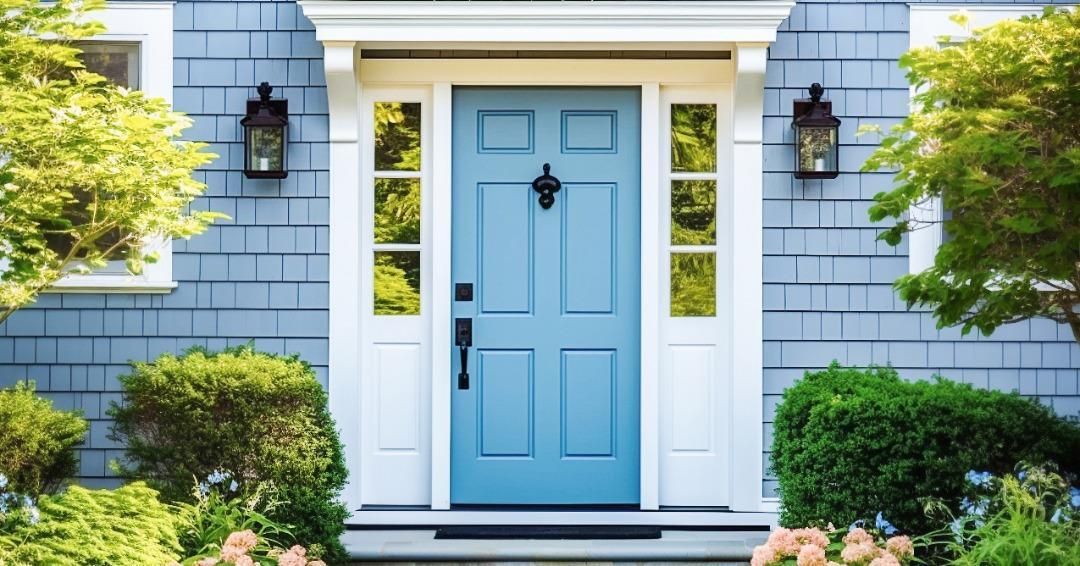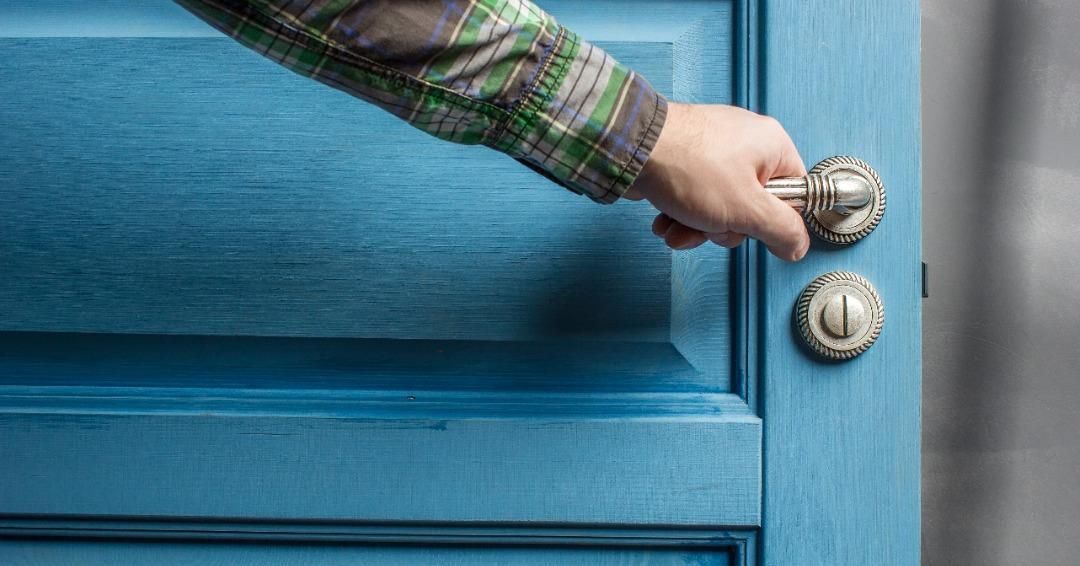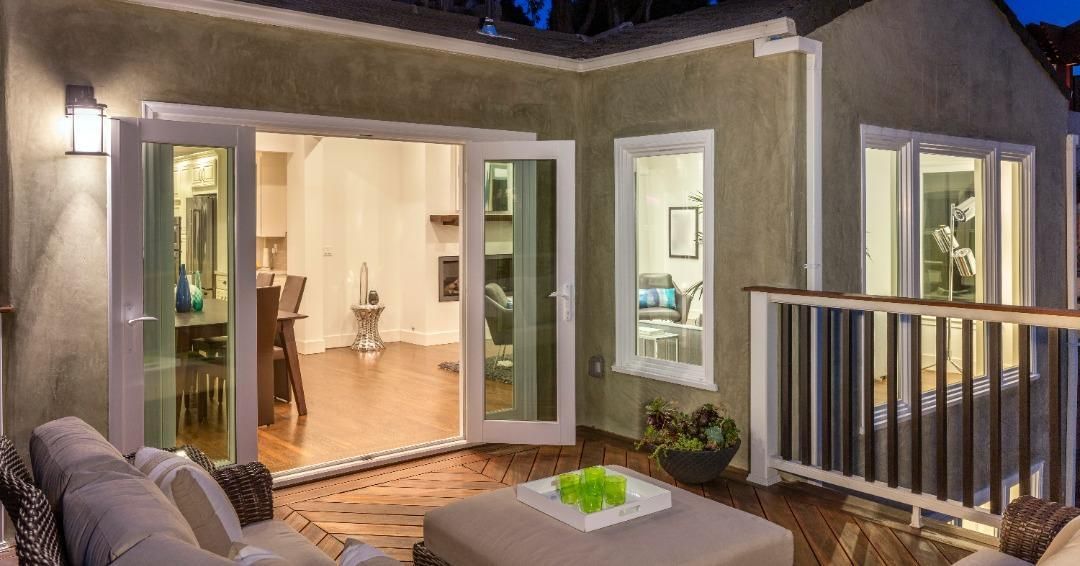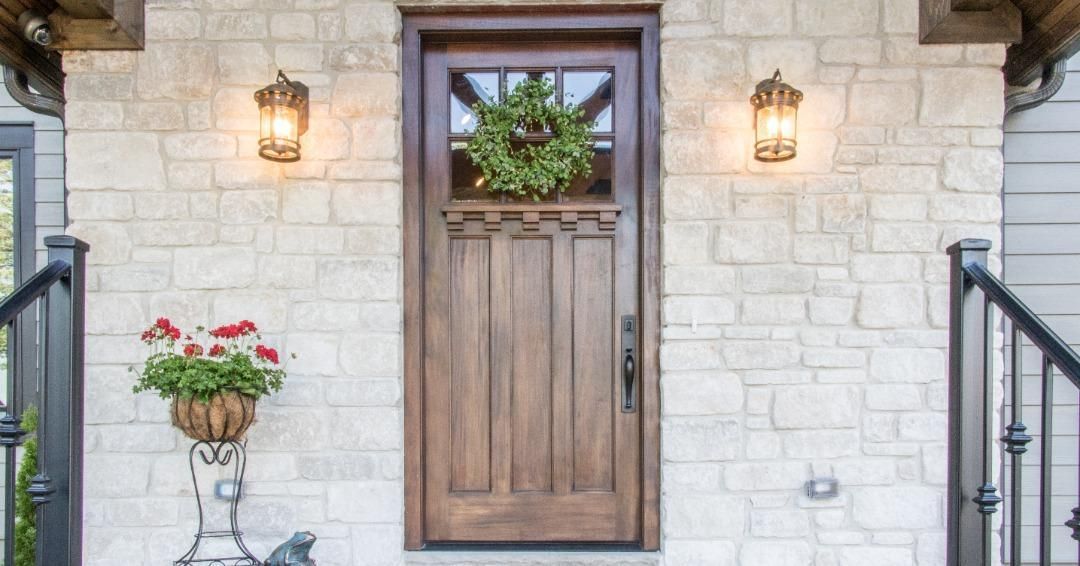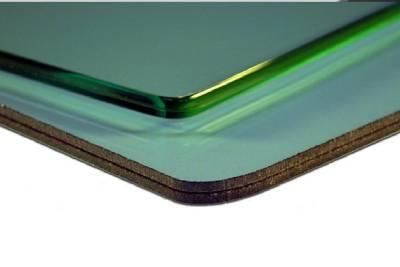The Role Of Climate In Door Repair And Maintenance

Doors are an essential part of any home. They provide us with privacy, safety, and security. But, it’s easy to forget that a door’s lifespan is not infinite. Over time, wear and tear can cause a door to become damaged, and the environment can accelerate this process.
If you’ve ever had to repair a door, you know that it’s not a cheap or easy task. But, what if I told you that you can extend the life of your door with just a few simple steps? I’m here to tell you that climate is a major factor in door repair and maintenance, and in this article, I’ll show you how.
From understanding the impact of weather on your door, to taking preventative maintenance steps, I’ll be covering everything you need to know about how climate affects the repair and maintenance of your door. So, if you’re looking for tips to keep your door in good condition, then stick around and let’s get started!
Understanding Climate Changes And Their Effects On Doors
Climate change is one of the most pressing issues of our time, and it has a direct impact on the maintenance and repair of doors. As the temperature fluctuates, so does the condition of the door. From expanding and contracting frames to warping and shrinking panels, understanding the effects of climate change on doors is key to keeping them in top shape.
As a door repair professional, it’s important to understand the climate and its effects on your craft. I like to think of climate in terms of “hot” and “cold” temperatures. Hot temperatures cause expanding and contracting frames, while cold temperatures cause warping and shrinking panels. Knowing the effects of both temperatures can help you anticipate and address potential issues before they arise.
Now that you have a handle on the climate and its effects on doors, the next move is to understand the impact of temperature on door repair and maintenance.
Impact Of Temperature On Door Repair
When it comes to door repair and maintenance, understanding climate changes and their impact on doors is key. Temperature is an important factor to consider, as it can cause doors to swell or shrink depending on the season. Here are some of the main impacts of temperature on door repair:
• Swelling:
– Warmer temperatures can cause wood doors to swell, making it difficult to close or open.
– Metal doors can also swell and become misshapen due to heat, which can interfere with their function and aesthetics.
– Temperature-related swelling can also cause door frames to become loose and require repair or replacement.
• Shrinking:
– Colder temperatures can cause wood doors to shrink, resulting in gaps between the door and the frame.
– Metal doors can become brittle and contract due to cold, leading to cracked paint and other issues.
– Cold-related shrinking can cause door frames to become loose as well, and may require repair or replacement.
By understanding the effects of temperature on door repair and maintenance, you can better plan for the needs of your doors in different seasons. This will help to keep your doors in good working condition and looking their best.
Next up, let’s take a look at the impact of humidity and its effect on door maintenance.
Humidity And Its Effect On Door Maintenance
The climate of an area not only affects the repair and maintenance of doors, but it can also have an impact on their long-term durability. Humidity is an important element of climate that can cause doors to deteriorate and weaken over time. When humidity levels are high, it can cause doors to swell and warp, which can lead to cracking, sticking, and other issues.
Ironically, while high levels of humidity can cause a door to deteriorate, low levels of humidity can be just as damaging. When the air inside a home is too dry, it can cause the wood in the door to become brittle and crack, leading to further damage.
To protect your doors from the effect of humidity, it’s important to keep a consistent level of humidity inside your home. This can be done by using a dehumidifier or a humidifier, depending on the climate of your area. It may also be a good idea to invest in a weather-resistant door made from materials like steel or fiberglass, as these materials are less likely to be adversely affected by humidity.
By managing the humidity levels in your home, you can help to ensure that your doors stay in good condition for as long as possible. And by controlling the climate to minimize door deterioration, you can ensure that your doors will remain in excellent condition for years to come.
Controlling Climate To Minimize Door Deterioration
Many people assume that there’s nothing they can do to prevent door deterioration due to climate changes. However, while climate is a major factor in door repair and maintenance, it doesn’t have to be the only one. Controlling the climate in your home is a great way to minimize door damage and help keep your doors looking great.
I’m sure you’re wondering how to do this. Well, the key is to maintain the humidity in your home. If the humidity is too high, it can cause the wood of your door to expand, resulting in warping and cracking. If it’s too low, it can cause the wood to dry out, resulting in splitting and shrinking.
In order to keep the humidity at a comfortable level, you can invest in a humidity monitor and a dehumidifier. The monitor will help you to keep an eye on the humidity in your home and make sure it’s not getting too high or too low. The dehumidifier will help to remove excess moisture from the air, thus preventing your doors from warping or splitting.
Ultimately, controlling the climate in your home is one of the most effective ways to minimize door damage. By investing in a humidity monitor and a dehumidifier, you can help to ensure that your doors last for years to come.
Next, we’ll take a look at the damages that can be caused by extreme weather conditions.
Damages From Extreme Weather Conditions
When it comes to door repair and maintenance, climate can play a significant role. Extreme weather conditions can cause significant damage to your door, and it’s important to be aware of the potential issues:
• High Temperatures:
– Warping, cracking, and shrinking
– Paint fading and peeling
• Low Temperatures:
– Cracking and splitting
– Weatherstripping becoming brittle
Knowing the potential issues that can arise from extreme temperatures is key when it comes to door maintenance. To ensure your door is in good condition and able to withstand the elements, it’s important to take the necessary steps to fix any damage caused by climate.
How To Fix A Door Damaged By Climate
When it comes to repairing a door that has been damaged by extreme weather conditions, you might be wondering if it’s even possible. But the truth is that it can be done! All you need is the right tools and materials and a bit of know-how, and you’ll be able to get your door back in shape in no time.
First, you’ll want to assess the damage to the door. If it’s just minor dents or scratches, then you can likely fix the problem yourself. Sand down any dents and scratches, then apply a coat of paint. This will help to restore the door to its former glory.
For more serious damage, such as warping due to heat, you may need to replace the door entirely. If this is the case, you should consider purchasing a more weather-resistant door. This will help to save you money in the long run and ensure that your door can withstand extreme climate conditions.
Now that you know how to fix a door damaged by climate, let’s move on to the next step. Common problems with doors in different climates can range from rotting wood to warping metal to rusting hardware. To ensure that your door is in good shape, it’s important to understand how to prevent and fix these issues.
Common Problems With Doors In Different Climates
Climate can have a huge impact on door repair and maintenance, depending on the type of climate you live in. Here are some of the most common problems that you might encounter with your door in different climates:
1) In cold climates, doors are more prone to warping and cracking due to extreme temperatures.
2) In hot climates, doors are more likely to swell due to high levels of humidity.
3) In coastal climates, doors are more prone to rust due to the moisture in the air.
It’s important to be aware of the problems that your climate might bring to your door, as this can help you to take the necessary steps to prevent any damage. Additionally, it’s also important to consider the benefits of investing in climate-resistant doors. To do this, let’s take a closer look at the advantages of having a door that can withstand different types of climates.
Benefits Of Climate-Resistant Doors
Climate-resistant doors come with a multitude of benefits, but ironically, one of the most important ones is saving you time, effort, and money in the long run. With a door that can stand up to changing climates, you can rest assured that you won’t have to worry about replacing them any time soon.
From my experience, climate-resistant doors also offer improved durability in harsh weather conditions and increased protection from the elements. They can help to keep your home safe from rain, wind, and snow, as well as providing an extra layer of security against intruders.
On top of that, these doors are designed to be aesthetically pleasing, so you won’t have to sacrifice style for function. Their sleek and modern designs can add a touch of sophistication to any home, and they can even help to increase your home’s value.
All in all, climate-resistant doors are a great option for anyone who wants to save time and money on door maintenance and repairs. With their long-lasting durability and eye-catching appeal, they can be a great addition to any home.
With that being said, next up we’ll look at some tips for maintaining doors in changing climates.
Tips For Maintaining Doors In Changing Climates
Keeping up with door repair and maintenance is essential in any climate, but it’s especially important in areas with changing climates. With temperatures, humidity, and other conditions in flux, your doors can take quite a beating. Fortunately, there are a few simple steps you can take to ensure your doors last for years to come.
First, I always make sure to inspect my doors frequently. Checking for cracks, warping, and other signs of wear and tear can help you spot any potential problems before they become serious. Also, keep an eye out for any signs that your door isn’t functioning as it should, like squeaking or sticking when you open and close it.
I also recommend giving your doors a good cleaning every few months. This will help to keep them looking nice, and it can also help to preserve their finish. You can use a mild soap and water to wipe away any dirt or debris, and then use a soft cloth to dry off the door.
It’s also a good idea to lubricate any moving parts, like hinges or locks. This will help to keep your doors functioning smoothly and prevent any unexpected issues. And, of course, don’t forget to check the weatherstripping on your doors. If it’s worn down, then you may need to replace it to prevent air leakage.
Finally, if you live in an area with extreme weather, then you may need to take extra steps to ensure your doors are protected. For example, if your area is prone to intense heat and sun, then you may want to invest in a high-quality door coating to help protect the finish.
Taking these simple steps to maintain your doors can help to ensure that they stay in good condition, even in challenging climates. And with that, you’re ready to move on to the next step: drawing your conclusion.
The Role Of Climate In Door Repair And Maintenance
In conclusion, climate and weather can have a major impact on the longevity of your door and its components. Taking the necessary steps to ensure that your door is properly maintained and cared for is essential if you want to keep it in great shape and prevent damage caused by weather conditions.
From making sure that your door is insulated and weatherproofed to checking for signs of wear and tear regularly, there are many things that you can do to protect your door from the elements. Taking the time to inspect your door and address any issues as soon as they arise can save you time and money in the long run.
Like the old saying goes, ‘a stitch in time saves nine’. Taking the time to care for your door now can help to prevent costly repairs down the road. Taking the proper precautions and following the tips outlined in this article will go a long way to ensure that your door stands the test of time, no matter what the weather throws at it.
Frequently Asked Questions
What Is The Most Cost-Effective Way To Repair A Door Damaged By Climate?
When it comes to door repair and maintenance, climate plays a major role. Extreme temperatures and high humidity can wreak havoc on a door, leaving it cracked, warped, or even completely broken. But while the damage may seem catastrophic, there are a few cost-effective ways to repair a door that has been damaged by climate.
First and foremost, it’s important to assess the damage and determine the best course of action. If the door is still in decent condition, you may be able to get away with simply patching up the cracks. Much like a doctor stitching up a wound, you’ll need to use a strong adhesive to patch the door back together.
If the damage is more extensive, you may need to replace the door entirely. In this case, a wooden door is usually the most cost-effective option. Wood is naturally resistant to the effects of climate, so it can withstand extreme temperatures and humidity without becoming damaged. Plus, it has a timeless and classic look that can add value to any home.
Finally, if your door has been completely destroyed, you may want to consider installing a steel door. Steel is extremely durable and can handle anything that climate throws its way. It may cost a bit more upfront, but you won’t have to worry about repairs for years to come.
When it comes to door repair and maintenance, climate can have a profound effect. But with a bit of research and the right materials, you can easily repair a damaged door without breaking the bank. Just keep these tips in mind, and you’ll have a beautiful and climate-resistant door in no time.
How Can I Select A Door That Is Resistant To Changing Climates?
It’s no secret that changing climates can wreak havoc on doors, leading to costly repairs. But at the same time, you don’t want to be replacing your door every few years. You want a door that is resistant to the elements and can stand up to changing climates.
So, how can you select a door that is resistant to changing climates? First and foremost, you’ll need to choose a door that is made of a durable material. Wood is a great option, as it is strong and can handle high levels of humidity and temperature changes. Metal doors are also a good choice, as they are resistant to corrosion, and can withstand extreme temperatures and other harsh weather conditions.
You’ll also want to make sure the door is properly insulated. This will help to keep the temperature inside your home consistent, and it can help to prevent damage from extreme temperature fluctuations. Additionally, you’ll also want to look for a door that has weatherstripping. This will help to keep out drafts, moisture, and pests.
Finally, if you live in an area that experiences extreme weather, you may want to consider investing in a storm door. These doors are designed to protect your main door from the harsh elements, while still allowing light and air to pass through. They are also an excellent way to add an extra layer of security to your home.
Selecting a door that is resistant to changing climates is an important part of door repair and maintenance. By taking the time to choose the right door, you can help to prevent costly repairs and ensure that your door lasts for years to come.
Are There Any Door Materials That Are More Climate-Proof Than Others?
When it comes to selecting a door that is resistant to changing climates, there are certain materials that are better suited for the job than others. Here are five of the most climate-proof door materials:
• Wood: Wood is a classic choice for doors, and it’s a great option for climates that experience extreme temperatures. It’s also great for maintaining a consistent temperature inside your home.
• Steel: Steel is one of the most durable materials you can use for a door, and it’s an excellent option for protecting against extreme temperatures.
• Fiberglass: Fiberglass is becoming increasingly popular for door material due to its ability to withstand extreme temperatures and its resistance to moisture.
• Vinyl: Vinyl is a great option for climates that experience extreme temperatures and humidity. It’s also a great option for areas that experience frequent storms.
• Aluminum: Aluminum is a lightweight material that is great for climates that experience extreme temperatures. It’s also resistant to corrosion and is a great choice for coastal areas.
No matter which material you choose for your door, it’s important to ensure that it’s properly sealed and insulated to maintain a consistent temperature inside your home. I recommend speaking with a professional to ensure that your door is completely climate-proof and that it will stand the test of time.
How Can I Keep My Door In Good Condition During Extreme Weather?
When it comes to door repair and maintenance, the climate can have a significant effect. Extreme weather conditions can cause damage to the door, which can be expensive to repair. Therefore, it’s important to take steps to protect your door from extreme weather.
The first step is to find a door material that is climate-proof. Depending on where you live, there are materials that are better suited for extreme temperatures, such as steel or fiberglass. By selecting a door that is more resistant to changes in temperature, you can reduce the risk of damage.
The next step is to make sure your door is properly sealed. This means that you should check to make sure there are no gaps or cracks in the door frame and around the door. If there are any, use caulk or weather stripping to fill them in. This will help to keep out cold air in the winter and hot air in the summer.
You should also take steps to protect the door itself. In the winter, you can use a door cover to help insulate it and keep the cold air out. In the summer, you can use a door awning to help keep the sun’s rays away from the door and reduce the risk of damage from the heat.
Finally, it’s important to inspect your door regularly and make any necessary repairs. A broken door handle or hinge can cause the door to become misaligned, which can result in drafts and let in cold air during the winter. By staying on top of your door’s maintenance, you can ensure it remains in good condition during extreme weather.
The climate can have a significant effect on the condition of your door. By taking the right steps to protect your door from extreme weather, you can keep it in good condition for years to come. With the right materials, proper sealing, and regular inspections, you can ensure your door is climate-proof and will remain in good condition regardless of the weather.
Does Maintaining Doors In Different Climates Require Special Tools?
Maintaining doors in different climates can be a tricky affair, and it’s important to know the requirements of each climate in order to keep your door in good condition. Different climates may require different maintenance and repair techniques, as well as specialized tools and materials.
In a dry climate, for example, it’s important to ensure that the door is well-lubricated and free of any dust or debris. This will help to keep the door working smoothly and prevent it from becoming stuck or difficult to open. Additionally, you may want to consider using a weatherstrip or door seal to keep out drafts and moisture.
In a wet climate, it’s important to inspect your door for signs of rot or mold, and to make sure that it is adequately sealed. You may want to use a weatherproofing sealant to prevent water from seeping into the door, and to make sure that your door is not exposed to too much moisture. Additionally, you may need to use special tools to help remove any rust or corrosion that may have built up on the door.
Finally, in a cold climate, you may need to use special materials to insulate your door and keep it from becoming too cold. It’s important to make sure that the door is kept in good condition, as cold weather can cause the material to become brittle and prone to damage. Additionally, you may need to use a lubricant on the hinges and locks to keep them from freezing.
Overall, it’s important to understand the climate and environment that your door is in in order to properly maintain it. Different climates may require special tools and techniques to ensure that your door remains in good condition and continues to work properly. By taking the time to properly maintain your door in all climates, you can help to keep it in great shape for years to come.

